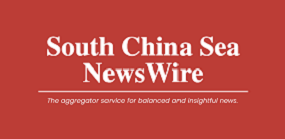By Sumathy Permal & Cheryl Rita Kaur
The ocean economy has emerged as the new economic frontier with a clear global mandate to fulfil the United Nation’s Sustainable Development, especially Goal 14 (UN SDG 14 on Life Below Water). This new economic frontier serves to diversify countries’ economies beyond land-based activities and along their coasts by delivering smart, sustainable, and inclusive growth. Consequently, developing the ocean economy has become an important strategy for economic transformation in major coastal countries. Notwithstanding the high concentration on high value of trade passing through the South China Sea and the geo-political rivalry between major powers, the sea areas remain one of the hotspots for living and non-living resources. It is more crucial to preserve the important biodiversity ecosystems. In this respect, the SCS region is one of the most opportune areas for the implementation of institutionalized Blue Economic Development.
The ocean economy has gradually become a new growth engine of countries adjacent to the sea which also becomes key priorities for national economic development. Countries in the Indo-Pacific region have pledged to move towards blue economy targets. This is due to the realisation that the oceans have been one of the most productive ecosystems on the planet, providing an array of services that spur economic activities and growth. The Blue Economy concept has emerged as an important approach to driving sustainable development.
Concept of Blue Economy
The concept of Blue Economy or Blue Growth was coined at the 2012 Rio +20 Earth Summit. The concept has been widely endorsed, including by countries in Southeast Asia. Blue Economy has been incorporated into countries’ strategies for economic development of the ocean with the aim to develop sustainable growth such as in the European Union (EU). In the regional context, the Association of Southeast Asian Nations (ASEAN) adopted the concept of Blue Economy as a new frontier for economic growth. ASEAN defines its Blue Economy Framework as an “integrated, holistic, cross-sectoral, and cross stakeholder approach that creates value-added and value-chain of resources from oceans, seas, and fresh water in inclusive and sustainable way.”
The main idea of Blue Economy is to incorporate sustainable development as part of the nation’s economy, inclusive of different interdependent sectors, such as maritime transport, tourism, energy, and fishing. The objective, among others, is to support long-term sustainable growth in all marine and maritime sectors. The Blue Economy gives additional focus for innovation in the sectors such as aquaculture, coastal tourism, marine biotechnology, energy from the oceans, and deep-sea mining.
Opportunities for Malaysia’s Blue Economy
International institutions—including the UN and ASEAN—through the Asia-Pacific Economic Cooperation (APEC), pledge commitments towards developing sustainable Blue Economy. In this respect, the regional Blue Economy essentially covers upstream-downstream sectors, serving as an accelerator of the conventional marine sector such as fisheries, aquaculture, maritime transport, and tourism as well as a catalyst for emerging sectors such as renewable energy, biotechnology, marine-based research, maritime training & education as well as new businesses targeted at aquatic resources.
Malaysia has been developing its maritime economic activities in and around its oceans, seas, and coastal areas as the potential of this domain is double the country’s land area. Realizing the importance of Blue Economy, Malaysia has incorporated blue economy development as a priority area in the Twelfth Malaysia Plan 2021-2025 (Priority Area B and Strategy B1). The priority areas define the Blue Economy as better management of marine resources for sustainable development that improves human well-being and social equity while significantly enhancing conservation measures for coastal and marine areas. Additionally, the aspiration to develop a national guiding document that enhances and promotes Blue Economy is a work in progress.
Despite the potential for Blue Economy to serve as a key area of economic growth for Malaysia, its development still faces numerous challenges. This is due to the undeveloped systematic approach towards “blue growth” especially on the marine business-to-business sub-sectors. Discourse analysis of the Maritime Institute of Malaysia’s (MIMA) engagements with international institutions mainly in the Indo-Pacific regions for exchanges address gaps in the Blue Economy sectors.
As such, initiatives towards effective development and management of Malaysia Blue Economy are needed. Potential initiatives include (a) the call for a common understanding and approach of the concept at the national and regional levels; (b) enhanced baseline information and data sources for benchmark and analysis purposes; (c) addressing depletion of marine resources and environmental health including through monitoring and adaptation mechanism; (d) sustainable development drivers and financing mechanisms; and (e) practical and timely policy, legal and management frameworks at national level, among others.
In summary, there is a high potential to enhance Blue Economy development between Malaysia and countries in the Indo-Pacific Region. Three general thematic areas to begin with are as follows:
- Developing coastal and oceanic sustainability Framework on Sustainable Fisheries and Ecosystems;
- Identifying joint initiatives under Blue Maritime Innovation and Technology through collaboration across the public-private sectors; and
- Enhancing maritime business-to-business linkages that included the ocean industry and ocean-related industries.
Sumathy Permal is a Senior Fellow at the Center for Maritime Security & Diplomacy and Cheryl Rita Kaur is a Fellow at the Center for the Straits of Malacca, both at the Maritime Institute of Malaysia. Ms. Permal is also on the Senior Advisory Board of the South China Sea NewsWire.


